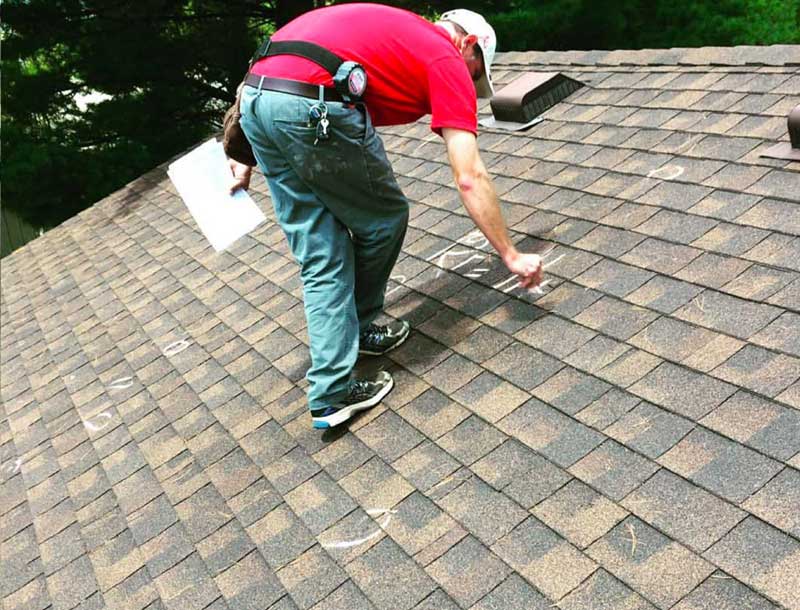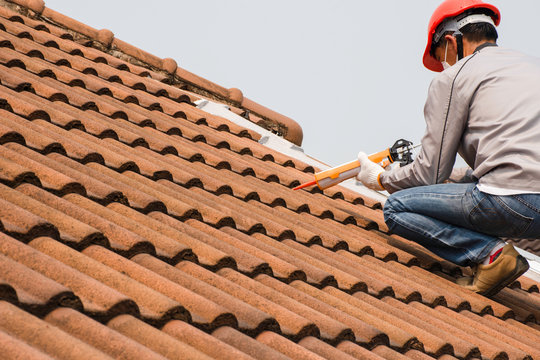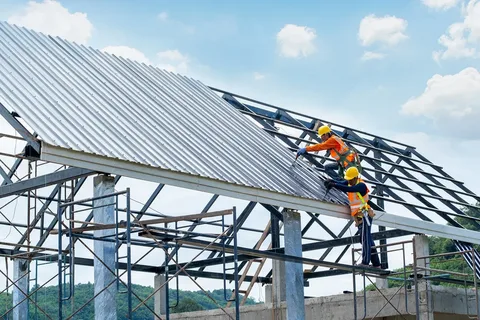As The Winter Months Roll In One Of The Most Common And Potentially Damaging Problems For Homeowners In New York Is The Formation Of Ice Dams.
Introduction
As the winter months roll in, one of the most common and potentially damaging problems for homeowners in New York is the formation of ice dams. These ice buildup formations can lead to leaks, water damage, and costly repairs. 🏚️
In this article, we’ll guide you through everything you need to know about ice dams, why they form, and how to protect your roof from these seasonal threats. Whether you’re a first-time homeowner or a seasoned pro, this information will help ensure your roof stays secure and safe during the harsh winter months. ❄️
1. What Are Ice Dams?
An ice dam occurs when snow on your roof melts due to heat escaping from the attic and then refreezes at the edges of your roof, forming a thick layer of ice. This buildup prevents water from draining properly, causing it to pool up and potentially seep into your home, leading to leaks and water damage. 💧
How Ice Dams Form
- Snow Melt: When heat from your attic warms the roof, snow begins to melt from the surface. Normally, the meltwater would flow down the roof and off the edge.
- Ice Buildup: However, the edges of your roof are often cooler and cause the melted water to freeze again. Over time, this repeated freezing forms an ice dam.
- Water Backup: As the ice builds up, it traps water behind the dam, which can seep under shingles and into your home.
2. Why Ice Dams Are Dangerous
While they might seem like a minor nuisance, ice dams can cause serious damage to both the roof and the interior of your home. Here’s how:
Water Leaks
The trapped water behind an ice dam will eventually find its way under shingles, causing leaks in your ceiling, walls, and even your attic. Over time, the water can cause mold growth, rot, and other structural issues, leading to expensive repairs.
Damage to Gutters and Roofing Materials
The weight of the ice can also cause physical damage to your gutters and roofing materials. 🏚️ The added stress from the ice buildup can cause gutters to detach from the house, resulting in costly repairs. Additionally, the repeated thawing and freezing process can cause shingles and roofing materials to crack and deteriorate.
Increased Heating Bills
Ice dams are a sign that your attic is not properly insulated. This leads to heat escaping through the roof, which is not only inefficient but also causes higher heating bills during the winter months. ❄️💡
3. How to Prevent Ice Dams from Forming
Now that we know what ice dams are and why they’re dangerous, let’s look at how you can prevent them from forming in the first place.
Proper Attic Insulation 🏠
The key to preventing ice dams is ensuring your attic is properly insulated. Without adequate insulation, warm air from your home escapes into the attic, warming the roof and causing snow to melt.
- How to Insulate: Make sure your attic is properly insulated with fiberglass or cellulose insulation. A well-insulated attic keeps the roof temperature consistent, preventing snow from melting and refreezing at the edges.
- Insulation R-VALUE: Aim for an R-value of 38 to 60 in your attic, depending on your home’s location and design.
Ventilate Your Attic Properly 🌬️
Proper ventilation is just as important as insulation. Ventilating your attic helps keep the temperature consistent across the entire roof surface, preventing uneven melting and the formation of ice dams.
- How to Ventilate: Make sure your attic has both intake and exhaust vents. Intake vents at the eaves allow cold air to flow into the attic, while exhaust vents at the roof peak allow hot air to escape. This constant air circulation keeps the attic cold and prevents snow from melting on the roof.
Install Ice and Water Shield 🧰
An ice and water shield is a membrane installed along the roof’s edge to prevent water from infiltrating your home. This barrier prevents any water that backs up from an ice dam from entering your home.
- Installation: Have this shield installed during roof replacement or as an additional protective layer to prevent water from getting under shingles.
Use Heated Cables 🔌
For areas prone to ice dam formation, heated cables can be installed along the roof edge. These cables melt snow and ice before they can accumulate into dangerous ice dams. While this is a more expensive option, it can be highly effective in areas with heavy snowfall.
4. How to Remove Ice Dams Safely
If you already have ice dams on your roof, it’s important to remove them carefully to avoid damaging your roof. Here’s what you can do:
Use a Roof Rake 🧹
A roof rake with a long telescoping handle can help you remove snow from the roof before it has a chance to melt and refreeze into an ice dam. Start from the edge of the roof and work your way up to remove snow, being careful not to damage the shingles.
Chipping Away the Ice 🔨
If ice has already built up, you can use a rubber mallet or a plastic shovel to gently remove the ice. Avoid using metal tools, as they can damage the roof.
Call a Professional 👷
If the ice dam is severe or you’re not comfortable with DIY methods, it’s best to call a professional roofing contractor. They can safely remove the ice and assess any potential damage caused by the ice buildup.
5. Long-Term Solutions for Preventing Ice Dams
Regular Roof Inspections 🧐
One of the best ways to avoid ice dams is through regular roof inspections. Before winter arrives, schedule a roof inspection to ensure your roof is in good condition, and your attic is properly insulated and ventilated. Early detection of issues can save you from expensive repairs later.
Gutter Maintenance 🧹
Keep your gutters clear of debris, such as leaves and twigs, that can cause water to pool. If water can’t flow freely through your gutters, it increases the likelihood of ice dams forming. Make sure to clean your gutters regularly to avoid blockages.
Conclusion
Ice dams are a serious concern during the winter months, but with proper insulation, ventilation, and maintenance, you can significantly reduce the risk of them forming on your roof. By taking preventive measures and acting quickly if ice dams do appear, you can protect your roof and home from costly damage and increased energy bills. ❄️🏠
Don’t wait for winter storms to arrive — get your roof ready now!


